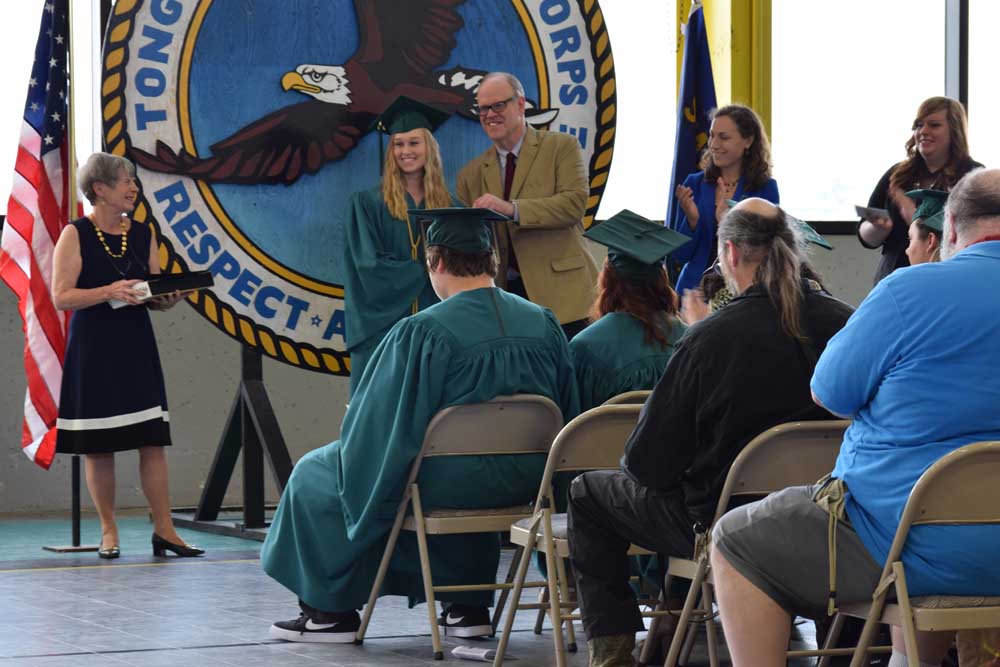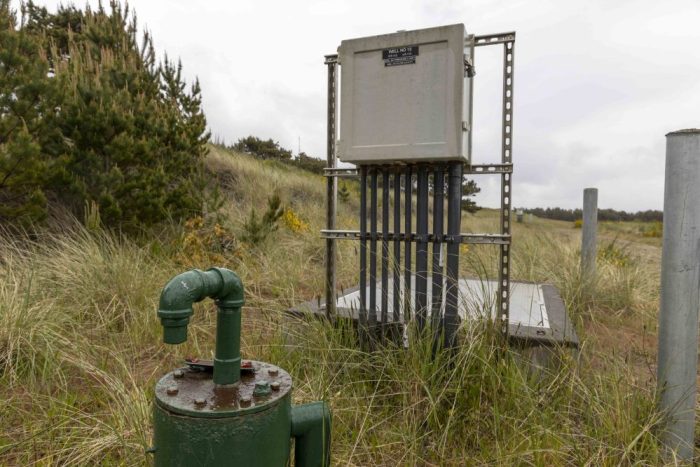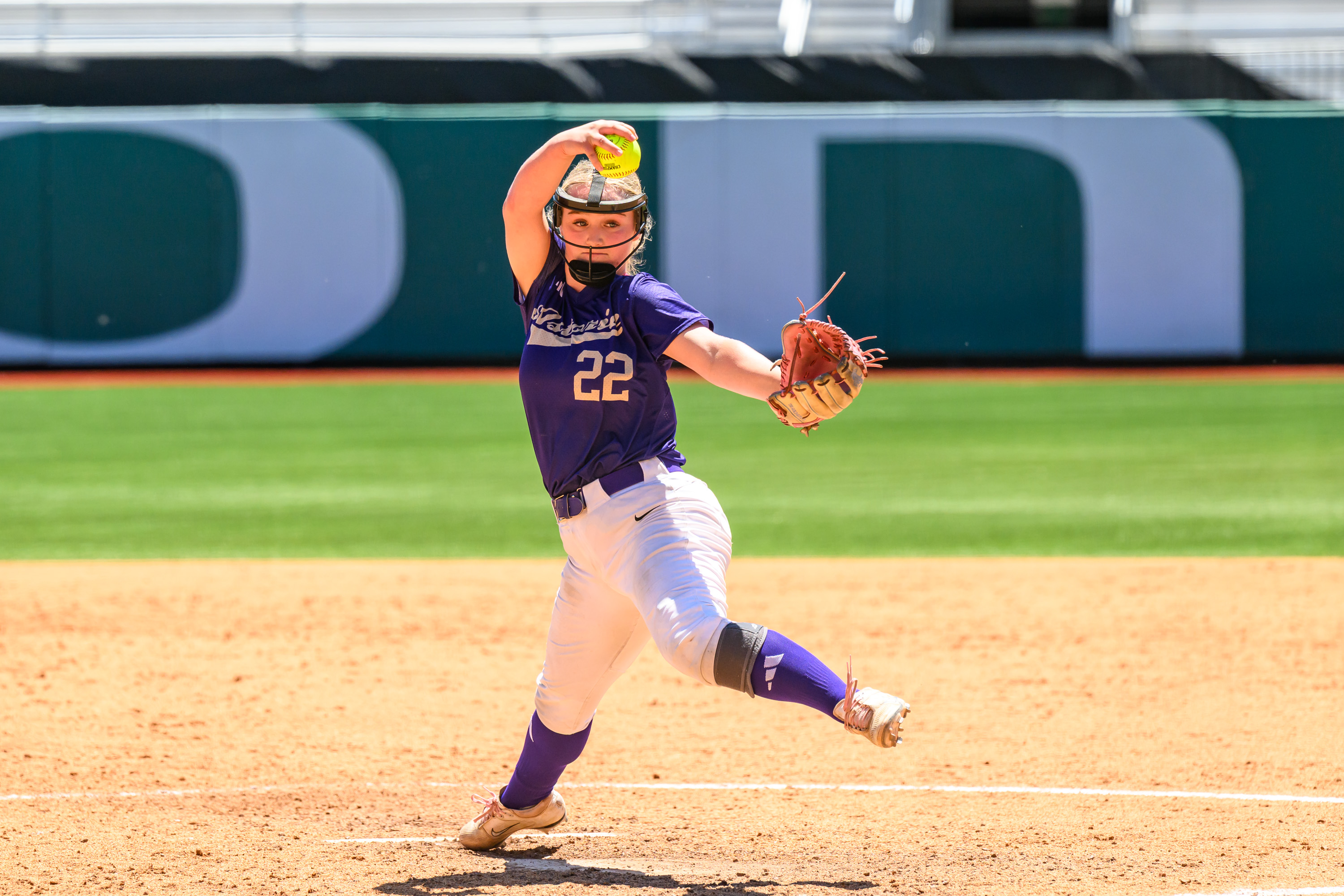Give me that old-time music
Published 4:00 pm Wednesday, January 19, 2005
Although it’s a cold January night and the wind creeps in under the door at Astoria’s old Shively Hall, old-time music warms the dancers and musicians inside.
Winter Wednesdays are quickly becoming known in some circles as the night to attend Gina and Hobe Kytr’s Old Time Music & Dance, a class offered through the Astoria Parks and Community Services Department. The current session will run through early March, with a second class starting March 30 and ending in early June.
Many people might know old-time music as the grab-bag of gospel and folk songs, popular and square dance tunes, ballads and songs you might sing around a campfire or on the front porch. Woody Guthrie loved and championed the non-commercial, homemade tradition. It’s rural, traditional music performed mainly on acoustic instruments, such as the fiddle, banjo and guitar. “Turkey in the Straw” is an old-time song, as is “Barlow Knife” and “Union Maid,” Guthrie’s song he based on the traditional piece, “Redwing.”
Billy Harris’ boot heel taps in time to the rollicking music.The Kytrs are longtime appreciators and performers of old-time music and clogging dance. They met in the 1970s in Portland – she belonged to the Stumptown Cloggers and he played in the Stray Cat Stringband – and soon joined in with the burgeoning old-time music and dance community there. The band and dance groups performed, taught and enjoyed carrying on the old songs and steps. The friendships and experiences there are what spurred the couple to start the classes in Astoria.
“We wanted to share the tradition of old-time music and clogging,” said Gina Kytr. “The main reason I wanted to teach this class was to build community. We are still close to the friends that we made back then, and I wanted to share that sense of community.” To help teach the less experienced students, the Kytrs have recruited some of their performing friends, seasoned musicians who play with local groups such as the Beerman Creek Stringband or the Brownsmead Flats. They’ve also asked several local cloggers to attend. All told, several dozen people have been gathering each week.
Facing each other in a circle, the musicians get ready for their next song.Gina Kytr credits the Astoria Parks staff for letting her organize the class how she wanted. Early sessions included ice-breaking exercises, where the students and participants got to know each other. There are teachers and nurses in the group, as well as an architect, pilot and student. Some play their instruments with ease, fingers nimbly gliding through chord changes. Other students are getting up to speed, gamely traversing songs that have been with us for more than 100 years.
“Basically, we wanted to give people a taste of what it’s like to play in a stringband,” said Hobe Kytr. “We wanted to teach people to play with each other.”
Margi Roberts concentrates as she plays along to ‘Union Maid.’Scholarly interpretations aside – and there are many – old-time music is good, front porch fare for the soul. It’s ear music, meaning its performers pick up songs by listening to others play them, rather than relying on sheet music. A fiddle often takes the lead
by playing the melody. The mandolin can help carry or second the melody, while the banjo player supports the melody, without actually playing the melody, and “punches out the rhythm,” explains Hobe Kytr. The guitarist, or guitarists, play backup and lay a groundwork to help everybody stay together.
“A solid guitar part makes everybody else’s job easier, by making both melody and harmony easier to hear and to understand,” he said. “Chord structure, rhythm and bass lines are the guitar player’s bread and butter.”
Hobe and Gina Kytr warm up before the class arrives.Together, the old-time musicians form a stringband, with the various instruments performing different roles. It’s not uncommon to have numerous people playing the same instruments – a recent Wednesday saw three fiddlers and a half dozen guitars playing in the band. Some of the songs might be familiar if you’re a fan of the monthly live radio show, “Troll Radio,” aired by KMUN and performed at the River Theater in Astoria. You also might have heard them at one of the country dances held at the Netel Grange.
“For a rural community, the North Coast is absolutely unique, in people’s enthusiasm for the music and dance traditions,” said Gina Kytr.
In fact, Portland is becoming a center for old-time music and traditional dance. The sixth annual Old Time Music Gathering takes place in Portland venues Jan. 19 through 23. Gina Kytr will teach a clogging workshop during the gathering, and the group that she and her husband perform with, Astoria’s Blue Heron Stringband, will play.
On a recent Wednesday night, Gina Kytr sits in the musicians circle, her fiddle in hand. She asks the group if they are ready to play to tempo, in order to up the speed for the cloggers, who will arrive a short while later to learn dance steps. The musicians take it up a notch. To an observer, the speed is dizzyingly fast, yet hypnotic. Hobe Kytr calls out chord changes to the guitarist next to him.
The dancers file in, and Gina Kytr moves over to the group to start the lesson. Clogging is a traditional American folk dance style that merges Irish step dancing, Scottish dancing, African American dance and bits and pieces of other dance traditions, and lots of personal style. A great part of it comes from the Appalachian mountains, whose people brought their Northern European home dances with them when they settled into mining towns. Cloggers tap their toes and shuffle their feet to the musical beat, bending their knees on the downbeat and straightening them on the upbeat.
Once you’ve learned the steps, it’s the kind of dancing you can do with your eyes closed, as long as you have the beat, and good and limber knees. Lots of people are doing it, too. According to the clogging magazine, Double Toe Times, there are almost 600 clogging dance groups in 50 states, plus Germany, Canada, Belgium and Australia.
“You don’t want to compete with the band,” Gina Kytr tells her Shively Hall dance students. “People shouldn’t notice the loud steps.”
You can tell the Wednesday cloggers enjoy dancing to the live music, and they step out lustily, striking just the right balance between making too much noise in their leather dance shoes – one fine dancer wears new cowboy boots – and complementing the music. The musicians start to play.
“I’m sticking with the union,” sings a clogger, harmonizing along with Guthrie’s song, “Union Maid,” and the other dancers move in the circle and take up the tune.
As Billy Harris and Gina Kytr play, dancers get ready for their portion of the class.The Astoria Parks and Community Services Department also holds classes in West Coast Swing, ballroom and Latin and country line dancing, with drop-in sessions available. Other offerings include a writing course for teens, glass and clay instruction and a class on getting a summer job. For more information, call (503) 325-7275 or stop by the Parks and Community Services Department Office on the second floor of Astoria City Hall, 1095 Duane St., for a course catalog.
The next dance at the Netel Grange in Astoria is Feb. 5. It starts at 7:30 p.m. and features the Blue Heron Stringband, with caller Bill Martin from Portland. Beginners are welcome and dances will be taught. Admission is $5 to $10 on a sliding scale.
A new session of the Old Time Music & Dance class starts March 30 and meets Wednesday nights for 10 weeks in Astoria’s Shively Hall. Beginning and intermediate level musicians and dancers who play the fiddle, banjo, guitar, mandolin and other instuments are invited to participate. No partner is necessary for the dance class, which features clogging, swing, waltzes and square dance patterns. The fee is $65.





